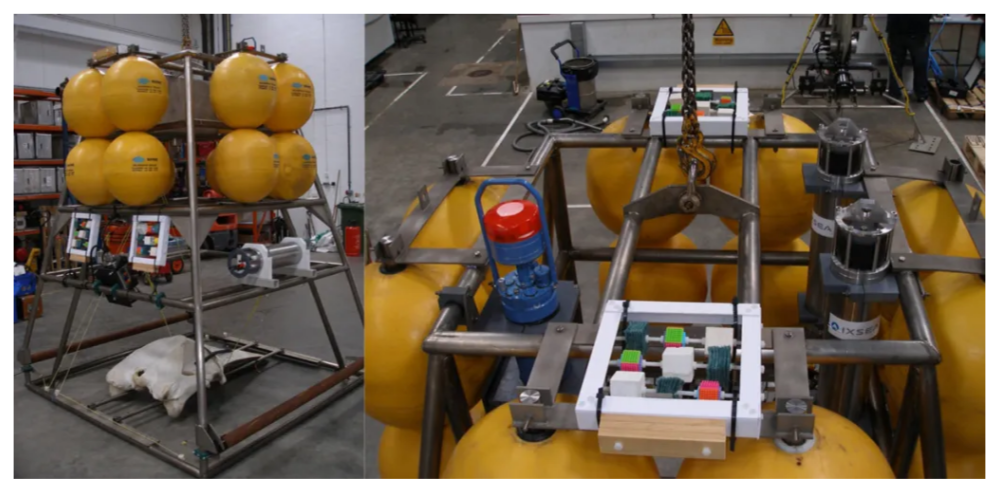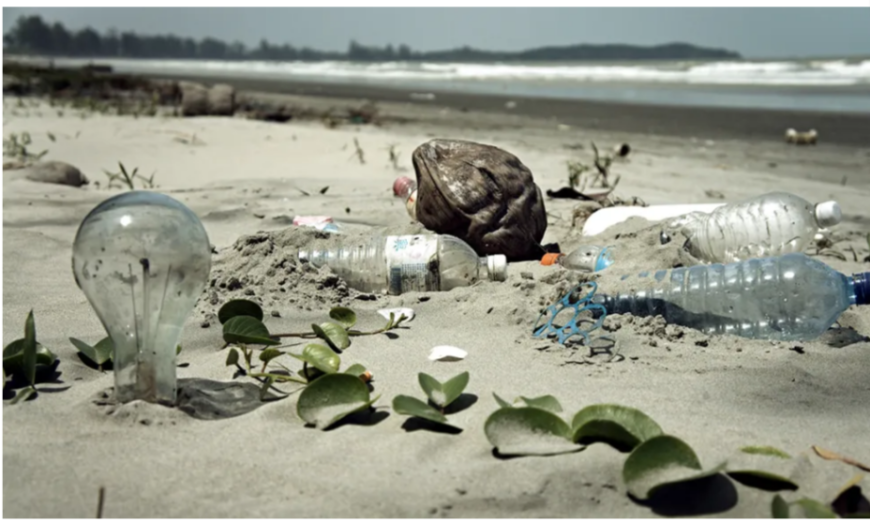Are bacteria hailing a ride on plastic 2,000 meters deep?
By Jenessa Duncombe.
Certain types of microbes that live thousands of meters deep in the ocean have a special affinity for plastic surfaces. Scientists want to know which bacteria choose to grow on plastic and whether they could skitch on fragments to travel around the ocean.
A study published last month revealed the motley crew of bacteria growing on plastic nearly 2,000 meters down in the Atlantic Ocean.
Halomonas titanicae, a rust-loving bacterium first discovered on the Titanic, and Aliivibrio, a pathogen dangerous to farmed fish, were found growing on deep-sea plasticc.
Among them is Halomonas titanicae, a rust-loving bacterium first discovered on the Titanic, and Aliivibrio, a pathogen dangerous to farmed fish. Compared with microbes on natural stone, these bacteria “actually showed an affinity for growing on the plastic as opposed to any hard substrate,” said Max Kelly, a Ph.D. student at Newcastle University who led the research.
Fewer than 1% of ocean plastics remain on the surface, and many scientists believe that the deep ocean is the final resting place for humanity’s refuse. Deep-sea microbes might be in a unique position to take advantage of the trash: Scientists wonder whether bacteria could hitchhike on plastic carried by ocean currents to travel to new ecosystems.
“Perhaps this influx of plastic is providing stepping stones across these large ocean distances,” said Kelly.
Ocean Floaties.
“An experiment like this requires a lot of effort from the researchers,” said Julio Cezar Fornazier Moreira, a scientist at the University of São Paulo who was not involved in the work. “Research studies in deep ocean layers are costly and require a very elaborate logistical strategy to be viable, especially when structures are deployed for long periods. So it is very satisfying to read works like this.”
The 10 plastic pieces used in the study traveled from Newcastle to the seafloor on a steel-framed Deep Ocean Benthic Observer lander. Oceanographers aboard the M/V Scotia placed the lander at the Atlantic’s Rockall Trough northwest of Scotland in 2015. The lander sat 1,796 meters below the surface for 420 days.
“We found this sort of small and yet really weird community that is able to stick to plastic.”
The lander held five plastic cubes of polystyrene, a common plastic in children’s toys, and five samples of polyurethane, a typical plastic in household kitchen scrubbers. Over time, bacteria attached and grew on the plastic and stone pieces, each a little smaller than a Rubik’s Cube.
When Kelly sequenced the bacteria’s RNA, “we found this sort of small and yet really weird community that is able to stick to plastic.”
“Plastic is quite hydrophobic. It’s hard for natural bacteria to stick.” More research is needed to understand how some bacteria cling so readily, said Kelly.

Less than 1% of the bacteria identified preferred only the plastic versus growing on both the plastic and the stone. Among them were Marine Methylotrophic Group 3, a group related to bacteria on methane seeps near New Zealand, and Spirosoma, a genus that’s known to survive in Arctic permafrost. The hydrocarbon-degrading bacteria from the genus Oleiphilus grew on both types of plastic.
“The next step is then looking at potentially what species…can be used for more plastic degradation studies. Ultimately, can we have your plastic degrading in compost bins at home?” Kelly asked. He published the work in the journal Environmental Pollution.
“This [study] is interesting because this could represent a habitat where a good amount of plastic debris could come to a final resting place,” said assistant professor Tracy John Mincer at Florida Atlantic University who was not involved in the research. “I look forward to seeing a full metagenomic study that can provide a ‘parts list’ of the genes that are present in these microbes colonizing plastics at depth.”
Jenessa Duncombe (@jrdscience), Staff Writer.
Citation: Duncombe, J. (2022), Microscopic hitchhikers found on deep-sea plastic, Eos, 103, https://doi.org/10.1029/2022EO220237. Published on 10 May 2022.

